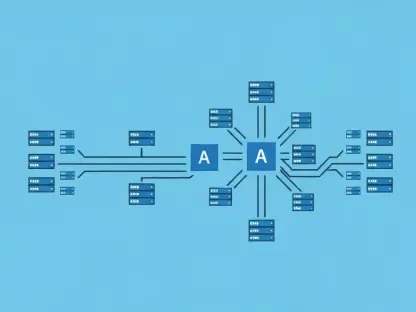In an era where software deployment is a critical business driver, ensuring streamlined, secure, and efficient processes is paramount for development teams. The introduction of advanced staging mechanisms has revolutionized how binaries, build artifacts, and release candidates advance through the DevOps pipeline. This paradigm shift not only improves the reliability and security of software releases but also enhances the overall efficiency of development cycles.
Enhancing Control and Automation in DevOps
The advanced staging feature introduced in modern DevOps tools like the Nexus Repository Professional v3 exemplifies a significant leap forward for software development teams. One of the fundamental aspects of this feature is the enhanced control it offers through access management. Administrators are empowered to define who can interact with specific components at various stages of the Software Development Lifecycle (SDLC). This meticulous control prevents the premature use of untested components, ensuring that only thoroughly vetted binaries make it to production environments.
Moreover, the integration of intelligent grouping capabilities allows for better organization and management of build artifacts. By clustering components logically, developers can effortlessly identify builds and manage retention periods by stage. This not only streamlines the workflow but also allows teams to apply specific rules and actions for future iterations of builds, enhancing the efficiency of the overall process.
Incorporating flexible movement of components between release stages through a REST API and implemented tags further augments the efficacy of DevOps pipelines. This flexibility ensures that components can be effortlessly transitioned through different stages, from development to production, with minimal risk and maximum efficiency.
Integration and Security
A major advantage of advanced staging methods revolves around seamless integration and enhanced security within the DevOps pipeline. The feature supports various formats and integrations, including maven2, user-defined layout (raw), docker, and npm repositories. The future plans to incorporate additional formats and integrations with prominent CI/CD tools like Jenkins and Maven are set to amplify its applicability across diverse development environments.
Integrating intelligent staging capabilities reflects a broader trend toward automating and scaling open-source governance within the pipeline. Nexus Repository leverages deep component intelligence and real-time remediation, empowering development teams to maintain a tighter grip on security and compliance. This holistic approach ensures that every component moving through the pipeline is subjected to rigorous testing and validation protocols, reducing the risk of vulnerabilities making their way into production systems.
The focus on enhancing both security and operational efficiency aligns with the evolving demands of the software industry, where the balance between innovation and security is continuously refined. By offering tools that facilitate better governance and management of build artifacts, DevOps pipelines are becoming more robust and capable of supporting rapid, safe, and scalable development practices.
The Path Forward for DevOps Pipelines
In today’s world, where the deployment of software has become a crucial element for business success, development teams must prioritize creating streamlined, secure, and efficient processes. Advanced staging mechanisms have brought about significant changes, revolutionizing the progression of binaries, build artifacts, and release candidates within the DevOps pipeline. This shift in approach doesn’t just improve the reliability and security of software releases; it also boosts the overall efficiency of the development cycles.
No longer do development teams have to suffer through cumbersome, error-prone processes. The adoption of sophisticated staging methodologies means that each stage of the pipeline is meticulously managed, reducing the risk of unforeseen issues and ensuring that software releases are consistent and dependable. In addition, these advanced techniques foster a faster turnaround, allowing for quicker iterations and more timely delivery of updates and features.
The result is a more harmonious workflow where resources are utilized optimally, and development cycles are shortened. Enhanced productivity, along with better resource management, leads to faster and more reliable software delivery, giving organizations a competitive edge in the ever-evolving tech landscape.









